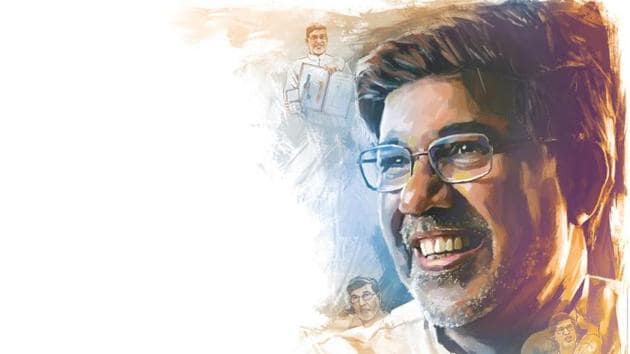Kailash Satyarthi: Fiesty Icon of Child Rights
This renowned child rights activist and reformer was the joint winner of the 2014 Nobel Peace Prize along with Pakistan’s Malala Yousafzai “for their struggle against the exploitation of children and for the right of all children to education.”
Born on January 11, 1954, to a police constable and a homemaker in the town of Vidisha in Madhya Pradesh, he was named Kailash Sharma. He grew up with his elder brother in a progressive environment.

He attended the Government Boys’ Higher Secondary School in Vidisha and took formal classes in Urdu from the Muslims in his neighbourhood. In early 1970s, Sharma enrolled at the Samrat Ashok Technological Institute in his home town, where he graduated in electrical engineering. He followed it up with post-graduation in high-voltage engineering and also taught in college for two years.
In 1977, he shifted to Delhi, where he worked for a publisher. Around this time, he decided to change his surname to Satyarthi. He was inspired by Arya Samaj founder Swami Dayananda Saraswati’s work Satyarth Prakash (Light of Truth) authored in 1875. As a social reformer, Swami Dayananda sought the abolition of the caste system and child marriages.
Activist to the fore
In 1980, Satyarthi quit his job as an engineer and, following an association with Arya Samaj activist Swami Agnivesh, who worked for the uplift of women and children, the former founded the Bachpan Bachao Andolan, (Save Childhood Movement) a nonprofit organisation aimed at establishing a child-friendly society.
In 1998, he launched the Global March Against Child Labour, collaborating with teachers, activists and non-governmental organisations (NGOs) globally to fight child labour. He led the march conducted in around 100 countries. The marchers covered around 80,000 km and demanded an international law on child labour. The march, which began in Manila, was considered a success since the International Labour Organization (ILO) adopted a convention that sought prohibition and immediate action for the elimination of the worst forms of child labour.
In 1999, Satyarthi became the president of the Global Campaign for Education, an international coalition of NGOs such as Oxfam, ActionAid and education institutions in over 80 countries. He also established GoodWeave International, a network of NGOs that aim to stop illegal employment of children in South Asia’s carpet industry. The organisation issues certificates endorsing the products made without involving child labour.
Raising awareness on trafficking
On September 11, 2017, the Kailash Satyarthi Foundation (KSCF) initiated a nationwide awareness programme titled the Bharat Yatra, from Kanyakumari, Tamil Nadu, about child trafficking. The 35-day march covered around 12,000km in more than 22 states and attracted over 5,000 organisations and thousands of educational institutions. In the year that followed, the campaign resulted in the introduction of the Trafficking of Persons (Prevention, Protection and Rehabilitation) Bill, 2018 in the Lok Sabha.
Recognition
Apart from the Nobel Peace Prize in 2014, several other awards and accolades have been conferred on Satyarthi such as the Robert F Kennedy Human Rights Award in 1995, Wallenberg Medal from the University of Michigan in 2002 and Guinness World Record for Largest Child Safe Guarding Lesson in 2017, called the ‘Satyarthi Class’.
Interesting facts
1. In 2017, Satyarthi made a Guinness World Record for the largest lesson on safeguarding children during what came to be known as ‘Satyarthi Class’ at Jayshree Periwal Intern’l School in Jaipur.
2. Satyarthi’s organisations, including the Bachpan Bachao Andolan, claim to have freed and rescued more than 85,000 children from trafficking and child labour in more than 144 countries.
3. He regards himself to be a huge admirer of Gandhi’s principles. According to him, it was his battle against untouchablity that the Father of our Nation made a lasting mark on Satyarthi.
4. Born as Kailash Sharma, he was unhappy with the caste system. Desiring to diminish the role of caste in his own life, he replaced his surname with Satyarthi, meaning the ‘seeker of truth.’
5. In 2015, Fortune magazine ranked him at the 28th place among the list of 50 extraordinary men and women in the world who are transforming business, government, and philanthropy.
Sources: Kailash Satyarthi Children’s Foundation, Wikipedia, and Bachpan Bachao Andolan
Illustration: Unnikrishnan



